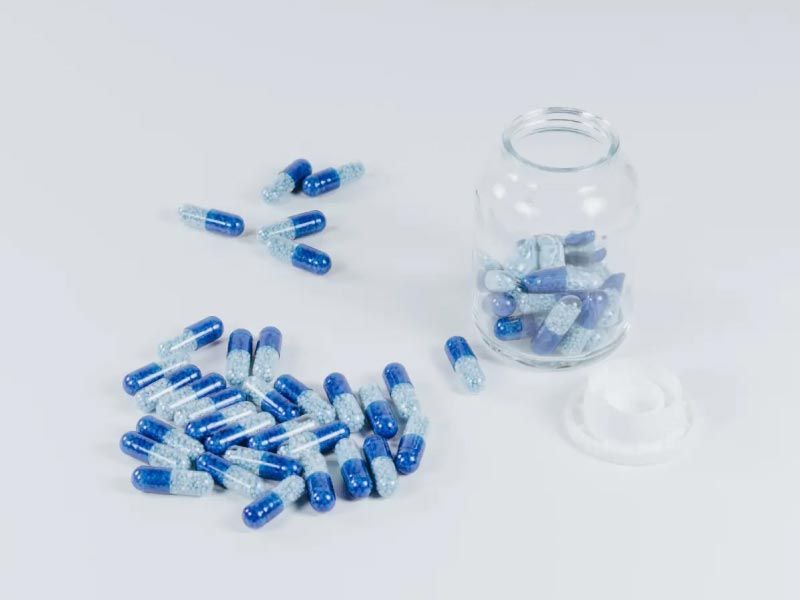
Vaginitis vs. Vaginosis
Published on June 24, 2025
Written by Kathleen Morrison
Medically Reviewed by Andrea Sleeth WHNP-BC, MSCP
Vaginitis, vaginosis, what's the deal here? These two conditions sound similar, but they’re not twins, more like cousins. Understanding what sets them apart can help you feel more confident when something down there feels… off.
Vaginitis is a general term for inflammation of the vagina—it can be triggered by infections (like yeast or STIs), irritants (like soaps or fabrics), or even hormone shifts (menopause or birth control). It usually shows up with symptoms like itching, redness, or swelling.
Vaginosis, most commonly bacterial vaginosis (aka BV), happens when the natural balance of vaginal bacteria gets out of sync. Think of it like your vaginal microbiome throwing a mini tantrum. The telltale sign? A strong, sometimes fishy odor and unusual discharge. BV isn’t about irritation—it’s more about imbalance.
Getting clear on what your body’s telling you helps you make moves that actually work.
Vaginitis
Vaginitis is just a fancy umbrella term for when the vagina gets inflamed or irritated. And yes, it happens to a lot of us at some point.
It can show up for all sorts of reasons—like an overgrowth of yeast, changes in hormones, friction from sex or tight clothes, or even certain soaps and products that mess with your pH. Vaginitis is your body’s way of saying, “Hey, something’s off, let’s check this out.”
Vaginitis symptoms
Your experience might look a little different depending on the cause, but some of the most common signs to watch for include:
- Unusual discharge (think: thick and white, or thin and gray with a strong smell)
- Itching or irritation around the vagina or vulva
- A burning feeling when you pee
- Discomfort or pain during sex
- Redness or swelling around your vulva
Basically, if your vagina’s sending up flares, it’s worth listening.
Main causes
Your vagina has its own software system—a delicate balance of bacteria, pH, hormones, and more. When something throws that balance off, vaginitis can happen. Here are a few of the most common culprits:
- Bacterial infections, like BV (bacterial vaginosis)
- Yeast overgrowth (usually Candida)
- Trichomoniasis—a super common, treatable STI
- Hormone shifts (pregnancy, birth control, menopause—all fair game)
- Products like perfumed soaps, douches, or spermicides that irritate the area
- Antibiotics that mess with your body’s natural flora
Vaginosis
When we talk specifically about vaginosis, we’re usually talking about bacterial vaginosis (BV). It’s common, treatable, and happens when your vaginal bacteria get a little out of whack. Your vagina is home to a delicate balance of good and not-so-good bacteria—and when the harmful bacteria start to take over, BV can show up and make things feel... not quite right.
BV isn’t anything to be ashamed of. Your body just needs a little help getting back into balance.
Vaginosis symptoms
Not everyone has symptoms, but when BV makes an entrance, you might notice:
- Thin, gray-ish vaginal discharge
- An unpleasant vaginal odor (especially noticeable after sex)
- Mild discomfort or itching (less common)
- A burning feeling when you pee (also less common)
Even if your symptoms are super mild—or you’re not noticing much at all—BV can still throw your body off. That’s why it’s a good idea to check in and get it treated.
Causes
BV isn’t an STI, but sex and lifestyle habits can sometimes play a role in tipping the balance in your natural vaginal flora. Here are a few things that might make BV more likely:
- Having a new sexual partner or multiple sex partners
- Douching (hard pass—it’s not helping, we promise)
- Using harsh soaps or cleansers inside your vagina
- Naturally having fewer “good” bacteria (like lactobacilli)
- Smoking
So, what's the difference?
Vaginitis and vaginosis can sound like the same thing, but they’re actually not identical twins. They're more like cousins, with overlapping symptoms, but different causes. Knowing the difference can help you tune into what’s happening down there and get the right kind of care.
Let’s make it simple: vaginosis (usually bacterial vaginosis, or BV) is one type of vaginitis. So, all BV is vaginitis—but not all vaginitis is BV.
Still with us? Cool.
Inflammation and imbalance
The biggest difference? It comes down to what’s going on behind the scenes:
- Vaginitis is a catch-all term that means there’s some irritation or inflammation happening in your vagina. That could be from an infection, or not. Sometimes it’s caused by hormones, allergies, or even products that don’t play nice with your body.
- Vaginosis (BV) is more specific: it’s caused by an overgrowth of certain bacteria that mess with your vagina’s natural balance.
So, while vaginitis can come from lots of different things (like yeast, STIs, or even a new lube), BV is all about bacteria taking over where they shouldn’t.
Symptoms and discharge
Discharge is one of your vagina’s best ways of communicating with you—so listen up. The color, texture, and smell can offer clues about what’s happening:
- BV (bacterial vaginosis): Thin, gray-ish or white discharge with a noticeable fishy smell (especially after sex). It’s usually not super itchy or painful.
- Yeast infections: Thick, white, cottage cheese-style discharge. Intense itching is the big giveaway here.
- Trichomoniasis (an STI): Frothy, yellow-green discharge with a strong smell, and often comes with burning or soreness.
Who's at risk?
The truth is, anyone with a vagina can experience vaginitis or vaginosis. But some factors may increase your risk of dealing with one or the other:
- BV often pops up in people who are sexually active, especially if you’ve had a new partner or multiple partners recently. Douching and smoking can also throw off your natural balance.
- Yeast infections are super common and can happen at any age. They’re more likely if you’re pregnant, taking antibiotics, have diabetes, or your immune system’s feeling low.
- Trichomoniasis is a sexually transmitted infection that tends to show up more often in folks with multiple sexual partners.
- Hormonal changes (like during pregnancy, breastfeeding, or menopause) can also shift your vaginal pH, making irritation more likely to experience vaginitis or vaginosis
Knowing your risk factors can help you figure out the steps to take better care of yourself, no matter what.
Vaginitis vs. Vaginosis in diagnosis
While it might be tempting to self-diagnose and grab an over-the-counter fix (we get it!), some vaginal infections really do need prescription treatment to clear up for good.
The best way to figure out what’s going on? Talk to a provider who actually listens—and knows the difference between a yeast infection, BV, or something else entirely to get an accurate diagnosis and the right care.
How doctors tell the difference
Your symptoms are a great starting point—but getting a clear answer often involves a little detective work. Here’s how providers typically get to the bottom of it:
- Chatting through your symptoms, including how long they’ve been happening and what they feel like
- Asking about your sexual activity and hygiene habits (no shame, just helpful context!)
- Doing a quick pelvic exam to check for signs of irritation, unusual discharge, or anything else that stands out
- Taking a sample of your vaginal fluid for testing—because your body holds the clues to what’s really going on
That sample can help pinpoint whether you’re dealing with BV, a yeast infection, trichomoniasis, or another kind of vaginitis. And once you know, it’s so much easier to treat effectively.
At-home Testing
At-home vaginal heath testing can be a convenient and private option for identifying the cause of vaginitis symptoms. These tests are designed to help detect imbalances like yeast, bacterial vaginosis, or trichomoniasis, offering initial insights before seeing a healthcare provider.
While they don’t replace a professional diagnosis, they can be a helpful first step in managing your vaginal health.
In-Office Tests and Exams
Here’s a quick breakdown of the kinds of tests your provider might use to figure out what’s going on behind the scenes:
- Vaginal pH test: Your vagina’s natural pH tells a story. A reading above 4.5 usually means BV is the culprit, while yeast infections and trichomoniasis typically don't affect pH.
- Wet mount: A drop of your vaginal fluid is mixed with saline and viewed under a microscope to look for clue cells (a sign of BV), spot yeast, or trichomonads.
- Whiff test: Weird name, but useful! A bit of fluid is mixed with a solution to check for a strong fishy smell—another sign of BV.
- Vaginal culture: A sample is sent to the lab to figure out exactly what kind of infection you’re working with.
Not every provider will use all these tests, and honestly, many diagnoses come from a mix of symptoms and simple pH or microscope checks. The goal is to get you the right treatment ASAP—no guesswork needed.
Treatment options
Let’s cut through the noise—when it comes to vaginal infections like BV or yeast, prescription treatment is the first and most important step. Full stop. That’s what gets to the root of the issue and actually clears things up.
There are also some other add-ons (like probiotics, washes, comfy undies, etc.) that can be helpful alongside your treatment, giving the vaginal tract some extra love.
Medications and TLC
Here’s a quick guide to what treatment can look like, depending on what’s going on:
- Prescription antibiotics: For BV, this is your go-to. Prescription metronidazole and clindamycin are the heavy hitters your provider will likely recommend, either as a pill or a vaginal gel/cream.
- Prescription or OTC antifungals: Yeast infections will need over-the-counter or prescription antifungal creams, ointments, pills, or suppositories. Common options include miconazole and fluconazole.
- Oral antibiotics for trichomoniasis: This one always needs a prescription. You’ll usually get metronidazole or tinidazole, and any partner(s) should be treated, too.
- Probiotics: Once you’ve started treatment, probiotics can help support your vaginal microbiome.
- Soothing at-home care: Want some extra comfort while your meds do their job? Cold compresses, breathable cotton undies, and skipping scented products can make a difference in how you feel.
Wisp treatment options are available only after consultation with a licensed medical professional. You should consult with your healthcare provider before starting a new supplement or treatment regimen. Individual results may vary.
When to check in with a provider
Your body’s smart—but it’s also totally OK to ask for help when things feel off. You should definitely reach out to a provider if:
- Your symptoms aren’t getting better with OTC meds
- You’re dealing with more than a few infections a year
- You’re pregnant or trying to conceive
- You’ve had a new partner or multiple partners recently
- You’re feeling extra symptoms like pelvic pain, fever, or unusual bleeding
How to take the best possible care of your vaginal health
Vaginas are amazing, but they’re also a little high-maintenance sometimes. And while there’s no magical way to completely stop infections from happening (because bodies are human and life is messy), there are simple things you can do to keep your vaginal health in a good place.
- Keep things clean—but gentle: Wash your vulva with warm water (skip the harsh soaps), wipe front to back, and change out of damp clothes ASAP. Avoid douching—it’s a marketing myth your vagina doesn’t need.
- Use barrier protection if it feels right for you: Condoms and dental dams are great tools for keeping things in balance, especially when you're getting to know a new partner.
- Say no to scented stuff: If it smells like a flower, it doesn’t belong in your vagina. Stick with unscented pads, tampons, and laundry detergent to avoid throwing off your natural vibe.
- Let your vulva breathe: Choose breathable undies (cotton underwear is best) and don’t live in leggings 24/7. Tight, synthetic fabrics that trap moisture aren't ideal—yeast loves a warm, damp environment.
- Support your body from the inside out: Probiotics can be a game-changer. There are certain strains of probiotics (containing Lactobacillus) are made to help keep your vaginal microbiome happy and balanced.
- Stay hydrated and keep an eye on sugar: Drinking water supports all your body’s natural functions—yep, even vaginal health. And since yeast loves sugar, being mindful of your intake can be helpful, especially if you’re prone to infections.
Your vagina’s been through enough
Vaginitis and vaginosis are super common—like, way more common than people talk about. So if something feels off down there, you’re not alone, and you’re definitely not doing anything wrong. These conditions can be annoying (and yes, uncomfortable), but the good news? They’re totally treatable, and getting care doesn't need to be complicated.
TLDR; vaginitis is a general term for vaginal inflammation, and it can show up for a few different reasons. Vaginosis usually means bacterial vaginosis, which happens when the good and not-so-good bacteria in your vagina get out of sync. It might sound complicated, but knowing the difference helps you get the right diagnosis and care, which means feeling better, faster.
You deserve a healthy, happy relationship with your body, and support that meets you where you are. So if something feels off, trust yourself and reach out. Wisp is here for you.
Frequently Asked Questions
What is the difference between vaginitis and vaginosis?
Vaginitis is a general term that covers any inflammation of the vagina. It can be caused by a bunch of things, like yeast, bacteria, irritation, or even hormones. Bacterial vaginosis (aka BV) is a specific kind of vaginitis caused by a bacterial imbalance in your vaginal microbiome. Think of vaginitis as the umbrella term, and BV as one type under that umbrella.
What happens if bacterial vaginosis goes untreated?
BV might seem like it’ll go away on its own, but it’s actually worth treating ASAP. If you leave it alone for too long, it can lead to some not-so-fun complications, like a higher chance of getting STIs, issues during pregnancy, or even pelvic inflammatory disease.
How do I know if I have vaginitis?
If your vagina suddenly feels... off, don’t ignore it. Common symptoms of vaginitis include abnormal vaginal discharge, a strong or fishy odor, itching, burning, or just general irritation. Basically, if things feel different and not in a good way, it’s worth getting a physical examination or some laboratory tests.
Which is worse, bacterial vaginosis or a yeast infection?
Neither is “worse,” but they are different. BV is caused by bacteria; yeast infections are caused by (you guessed it) yeast. Both can be uncomfortable, and both need different treatments to clear things up. What matters most is getting the right meds, not pushing through or guessing.
This blog post is for informational and educational purposes only and should not be taken as professional advice. Always consult with a qualified professional before making any decisions based on the information provided here.

BV Antibiotics (Tablets or Gel)
Starting at $15.00
Request topical or oral prescription antibiotics to treat bacterial vaginosis.

Bacterial Vaginosis & Yeast Swab Test Kit by Wisp
$159.00
At-home test for Bacterial Vaginosis and Yeast Infections.


